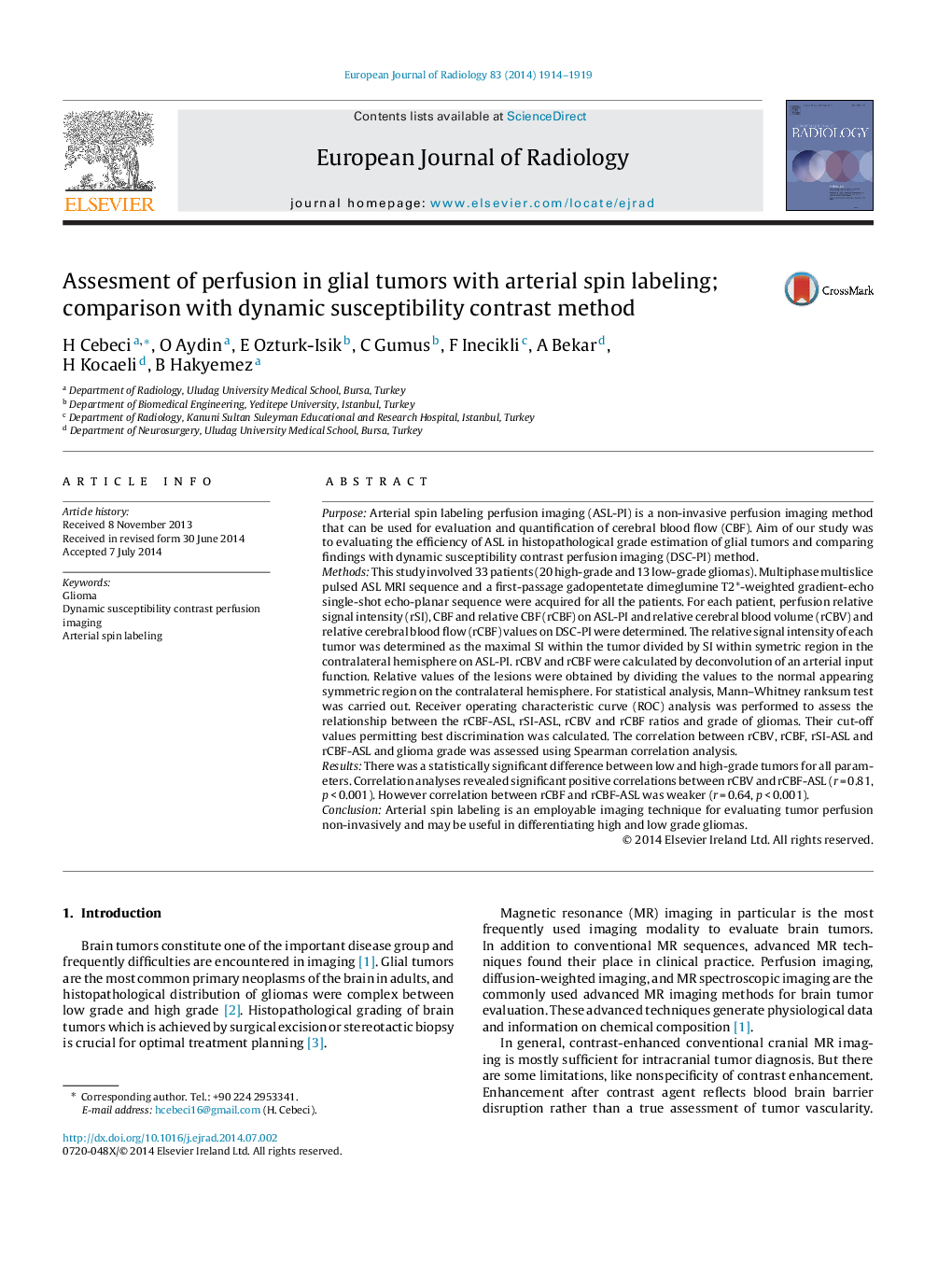| Article ID | Journal | Published Year | Pages | File Type |
|---|---|---|---|---|
| 4225379 | European Journal of Radiology | 2014 | 6 Pages |
•We compared the perfusion parameters obtained with both DSC and ASL perfusion imaging methods.•In ASL perfusion imaging, we also created quantitative CBF maps.•All patients included in the study had histopathological diagnose.•All MR examinations are done with 3T MR imaging system.
PurposeArterial spin labeling perfusion imaging (ASL-PI) is a non-invasive perfusion imaging method that can be used for evaluation and quantification of cerebral blood flow (CBF). Aim of our study was to evaluating the efficiency of ASL in histopathological grade estimation of glial tumors and comparing findings with dynamic susceptibility contrast perfusion imaging (DSC-PI) method.MethodsThis study involved 33 patients (20 high-grade and 13 low-grade gliomas). Multiphase multislice pulsed ASL MRI sequence and a first-passage gadopentetate dimeglumine T2*-weighted gradient-echo single-shot echo-planar sequence were acquired for all the patients. For each patient, perfusion relative signal intensity (rSI), CBF and relative CBF (rCBF) on ASL-PI and relative cerebral blood volume (rCBV) and relative cerebral blood flow (rCBF) values on DSC-PI were determined. The relative signal intensity of each tumor was determined as the maximal SI within the tumor divided by SI within symetric region in the contralateral hemisphere on ASL-PI. rCBV and rCBF were calculated by deconvolution of an arterial input function. Relative values of the lesions were obtained by dividing the values to the normal appearing symmetric region on the contralateral hemisphere. For statistical analysis, Mann–Whitney ranksum test was carried out. Receiver operating characteristic curve (ROC) analysis was performed to assess the relationship between the rCBF-ASL, rSI-ASL, rCBV and rCBF ratios and grade of gliomas. Their cut-off values permitting best discrimination was calculated. The correlation between rCBV, rCBF, rSI-ASL and rCBF-ASL and glioma grade was assessed using Spearman correlation analysis.ResultsThere was a statistically significant difference between low and high-grade tumors for all parameters. Correlation analyses revealed significant positive correlations between rCBV and rCBF-ASL (r = 0.81, p < 0.001). However correlation between rCBF and rCBF-ASL was weaker (r = 0.64, p < 0.001).ConclusionArterial spin labeling is an employable imaging technique for evaluating tumor perfusion non-invasively and may be useful in differentiating high and low grade gliomas.
